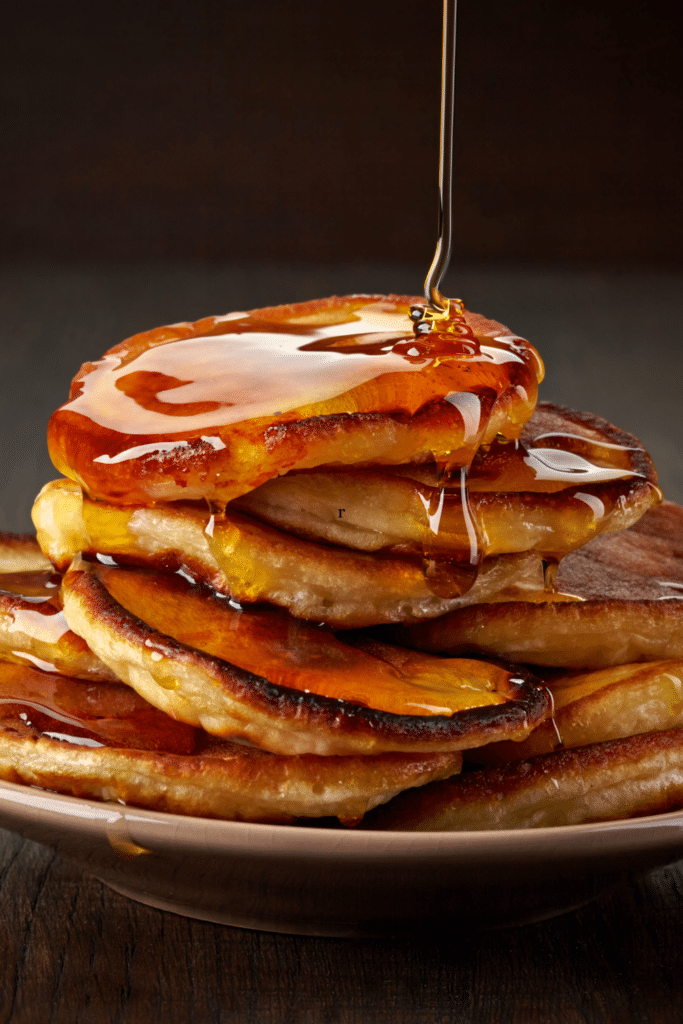Introduction
In a comprehensive review article featured in the journal Heliyon, researchers delve into the multifaceted world of maple syrup, uncovering its nutritional richness, remarkable pharmacological properties, and captivating sensory attributes.
Nutritional Wealth of Maple Syrup
Maple Syrup’s Role as a Natural Sweetener: Maple syrup stands as a wholesome alternative to refined sugar, boasting a notably lower glycemic index. This quality makes it a valuable ally in mitigating the risk of diabetes, obesity, and various metabolic disorders.
The Maple Transformation: The journey from maple sap collected from sugar maple trees to maple’s syrup involves a meticulous boiling and concentration process.
This metamorphosis imbues maple’s syrup with an array of bioactive phenolic compounds, organic acids, amino acids, minerals, vitamins, phytohormones, and macronutrients—principally carbohydrates. These components collectively enhance the nutritional, pharmacological, and sensory dimensions of maple syrup.
Tip: Please fill out this form to determine whether or not you or a friend are eligible for a CGM and, Also learn about Diabetes Monitoring Trends
Nutritional Properties Unveiled
Energy Abundance: Maple’s syrup emerges as a robust source of carbohydrates, significantly contributing to the body’s energy requirements.
Moreover, it boasts a mineral and vitamin ensemble—potassium, calcium, zinc, sodium, iron, magnesium, niacin, thiamine, and riboflavin—that fuels diverse biological processes, such as enzyme and hormone synthesis, and the maintenance of vital organ functions.
Read Guide about Wegovy Dosage Guide: The Best Way For Weight Loss
Guardian of Health: Animal studies illuminate maple’s syrup hepatoprotective effects, reining in ammonia formation, regulating lipogenesis and lipolysis, and reducing levels of aspartate aminotransferase (AST) and alanine aminotransferase (ALT).
Moreover, moderate maple syrup consumption exhibits blood glucose control in type 2 diabetic rats, bolstered by the discovery of a functional oligosaccharide called maplebiose1 within maple syrup, which plays a pivotal role in blood sugar management.
A Comparison with Natural Sweeteners: Comparative studies spotlight maple syrup’s nutritional parity with other natural sweeteners like brown rice syrup, blue agave syrup, corn syrup, and natural honey.
Nonetheless, the need for human clinical trials remains imperative to fully grasp the nutritional and health benefits vis-à-vis other natural sweeteners.
Must Read About: Systemic Juvenile Rheumatoid Arthritis and T1D
Pharmacological Marvels
Antioxidant Arsenal:
Maple’s syrup houses two groups of antioxidant compounds—glycosylated phenolics and aglycones.
These compounds, notably the ethyl acetate–soluble fractions, flaunt formidable antioxidant prowess, curbing nitric oxide overproduction induced by lipopolysaccharide (LPS), mitigating reactive oxygen species (ROS) production sparked by H2O2, and thereby thwarting oxidative DNA and protein damage.
Anti-Inflammatory Champion:
Maple syrup’s phenolic compounds shine as anti-inflammatory agents, reigning in nitric oxide, nitrite, and prostaglandin-E2 production.
Inflammatory biomarkers, including nitric oxide species, interleukin-6 (IL-6), and tumor necrosis factor-alpha (TNF-alpha), find their expression curtailed by maple syrup extracts.
Quebecol, a maple syrup-derived polyphenolic compound, emerges as a potent inhibitor of Nuclear Factor Kappa B (NF-κB) activation, a pivotal player in the inflammation cascade.
Fighting Cancer:
Maple syrup extracts exhibit anticancer effects in various cancer types, arresting cell cycle progression, diminishing AKT phosphorylation, and suppressing tumor suppressor gene expression.
Dark maple’s syrup, in particular, showcases heightened anti-proliferative efficacy compared to its amber counterpart.
Diabetes Defense:
In animal models of type 2 diabetes, maple’s syrup extracts inhibit porcine α-amylase and α-glucosidase enzymes, pivotal players in carbohydrate and starch digestion, effectively controlling glucose levels.
Neuroprotection and Anti-Aging:
Maple’s syrup compounds demonstrate neuroprotective properties, thwarting the onset of age-related neurodegenerative diseases like amyotrophic lateral sclerosis (ALS).
They also inhibit the formation of advanced glycation end products (AGEs), contributing to anti-aging effects. In Alzheimer’s disease, syrup extracts impede the aggregation of β-amyloid (Aβ) and tau peptides, two hallmarks of the disease.
Antimicrobial Shield:
Glycosylated and aglycone phenolic compounds within syrup extracts exhibit antimutagenic and antimicrobial activity against Gram-negative bacteria, with compounds like gallic acid, catechol, catechaldehyde, syringaldehyde, vanillin, and 3-hydroxybenzoic acid at the forefront.
Sensory Symphony of Maple Syrup
Maple syrup’s sensory charm lies in its organic acids, free amino acids, protein, and phenolic compounds.
These components orchestrate its distinct sensory profile, with 5′‐inosine monophosphate responsible for taste, enolic viscous oil for scent, and a medley of compounds like vanillin, syringaldehyde, and ethyl vanillate contributing to its unmistakable flavor.
These elements collectively create a sensory experience that sets maple’s syrup apart in the world of natural sweeteners.


